Designing Schools for a Modern Learning Environment
Mobile Interactive Whiteboards
Reinforcing the functionality of flexible classrooms, mobile whiteboards allow a vertical, connected interactive whiteboard to move according to the classroom configuration. A side table holds a laptop. When the stand adjusts up and down, it can be used for students of various ages, sizes and abilities (i.e. for those sitting in wheelchairs).
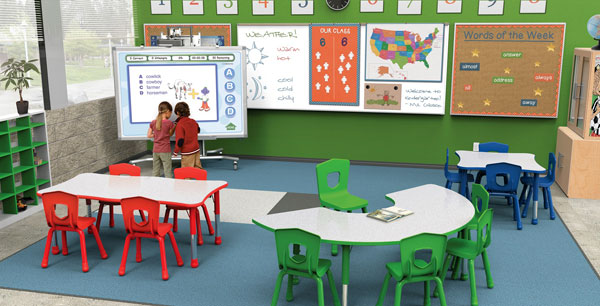
Image courtesy of MooreCo Inc.
New technology allows for whiteboards that are both mobile and interactive.
Mobile Workstations
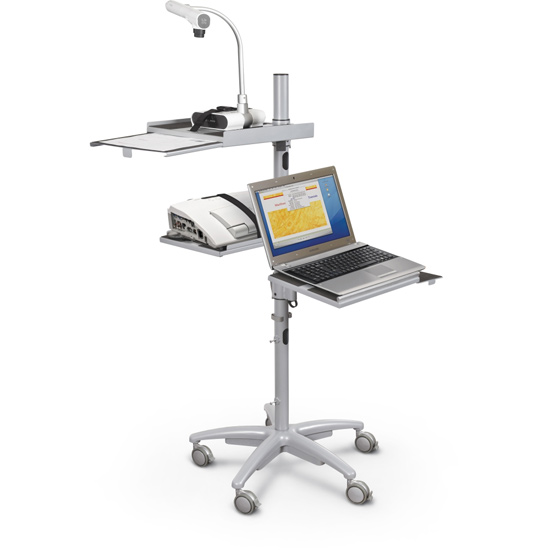
Image courtesy of MooreCo Inc.
A mobile workstation allows a teacher to teach effectively throughout the classroom, including one-on-one sessions with students or small groups.
This could be considered a teacher’s mobile technology “stick,” allowing the teacher to move around the room with ability to use both a document camera and projector in her or his laptop. It can also be used as a mobile projector cart for transporting AV equipment from room to room, and also for use in a smaller area, furthering the flexible theme of the new learning environments.
Modular Teacher’s Desks
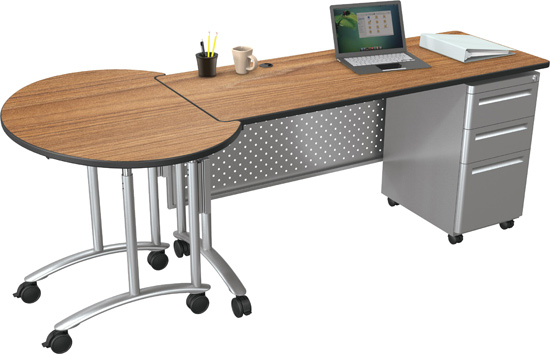
Image courtesy of MooreCo Inc.
Flexible desk options allow teachers to configure the station that is right for their individual needs and requirements.
No longer is the teacher’s desk a heavy immovable wooden monolith at the front of the room. Instead, the teacher in the modern learning environment should be able to create a custom configuration according to teaching needs and style. Modular desk units include a single desk on casters, conference-size desk, return desks, height-adjustable desks, podium desks with built-in lectern, an AV panel, filing cabinet, USB chargers and other features.
Height-Adjustable Desks
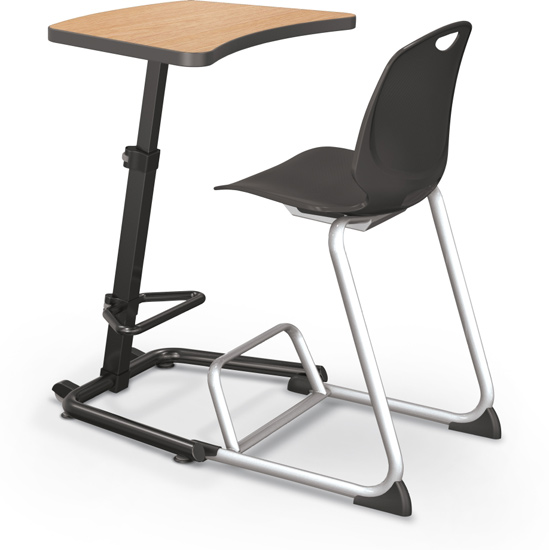
Image courtesy of MooreCo Inc.
Desks that allow students to sit or stand helps them keep focused.
A Mayo Clinic studyxiii took the concept of flexible seating arrangements one step further and asked: “Do children really need to sit while they learn?” To test this theory, researchers designed a “chairless” school, complete with standing desks.
It’s becoming clearer that sitting for long periods of time is detrimental to human health. To ask students to stay seated for long hours is teaching them bad habits. While perhaps far off to imagine, in the future every classroom desk would be adjustable for sitting and standing alternations, which would actually be ideal.
According to the National Education Association, kids who fidget, especially those with ADHD, attention-deficit/hyperactivity disorder, need to move around to focus on a complicated mental task. Standing desks provide the movement needed.
Adjustable Perch Stools
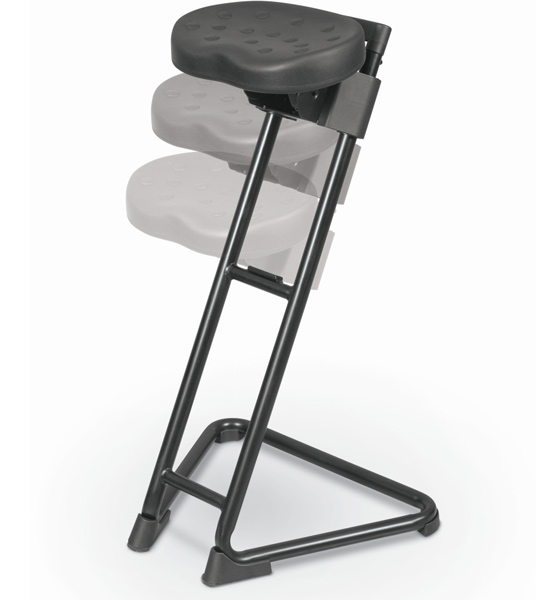
Image courtesy of MooreCo Inc.
Adjustable perch stools allow for easy use of a sit/stand desk.
Perch stools can be used with adjustable height desks. Varying between standing and sitting helps students maintain focus, burns calories, improves circulation and builds fitness.
Mobile Partition and Display Panels
Flexible space may require partitions at times. This option allows for more display space for student achievements.









